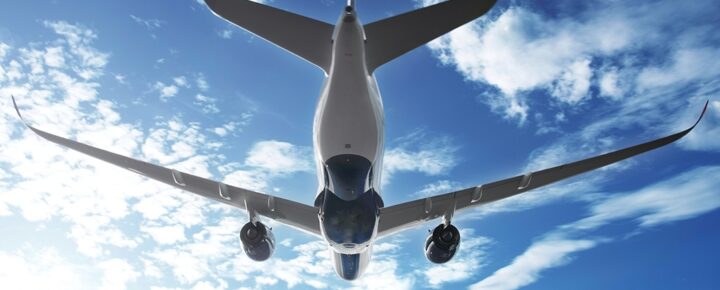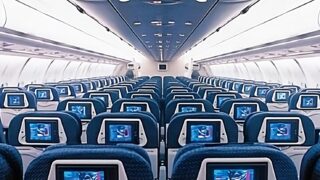The battle for airline dominance is seriously heating up, with significant implications for Hawaiian Airlines and its new parent company, Alaska Airlines. That could bring good news for passengers looking for deals. When Alaska announced the decision to deploy the older Hawaiian Airlines A330-200 widebody on their new Seattle to Asia transpacific routes, its major competitor decided to deploy their flagship aircraft to Seattle to compete.
The move underscores the high stakes as airlines vie for market share across Asia and the Pacific, including Hawaii. While Hawaiian and Alaska have loyal followings, the competitive landscape is shifting. Passengers more than ever prioritize value as well as the latest aircraft, superior premium cabins, enhanced overall travel experiences.
A game-changer for Seattle and Hawaii routes.
The competitor, Delta Air Lines, will deploy its latest flagship widebody aircraft from Seattle to Asia, raising questions about what might come next for Hawaii routes, too. Currently, Hawaiian operates its A330-200 widebody between Seattle and Honolulu, which in that market offers a significant edge over the narrow-body aircraft typically used by others.
However, with the Delta flagship’s introduction to transpacific routes, it’s hard not to speculate whether this premium aircraft—or another upgrade—might soon find its way to at least some Hawaii services.
Delta’s A350-900 features 306 seats, including 32 Delta One Suites, 48 premium economy seats, 36 extra-legroom economy seats, and 190 standard economy seats. This flagship aircraft is known for its spacious layout, cutting-edge technology, and upgraded passenger experience across all cabins.
At present, Hawaiian’s A330 fleet serves as its workhorse. Still, it cannot rival the advanced features and passenger experience of newer widebodies like the Hawaiian Dreamliner (currently two, with ten more on order) or the competitor’s flagship A350-900. The A330 has 278 seats, comprised of 18 lie-flat business seats, 68 extra-legroom economy seats, and 192 standard economy seats.
It currently lacks a dedicated premium economy cabin, which is expected to come to the planes following refurbishment at a date not yet announced.
Alaska’s decision to reserve the latest Hawaiian Dreamliner primarily for the Los Angeles to Honolulu routes suggests one strategic focus, but it leaves Seattle more vulnerable in the upcoming battle for highly lucrative premium travelers.
Travelers flying to Hawaii from the Pacific Northwest might soon see shifts in aircraft types and onboard amenities as the battle for market share intensifies. Widebody aircraft could disrupt this dynamic further, raising expectations for what airlines offer on these newly prioritized routes.
Loyalty vs. value: shifting priorities among travelers.
While Alaska Airlines remains the hometown favorite in the Pacific Northwest, loyalty alone may not be enough to hold the line here. Today’s travelers, especially those premium cabin flyers that airlines seek above all, are increasingly focused on value for cost. They expect modern planes, state-of-the-art suites, and true premium economy sections.
Hawaiian’s A330-200s, even after the upcoming refurbishment planned, struggle to compete with offerings from carriers like ANA, Delta, and JAL, which will operate Dreamliners and A350-900 on key Seattle-Asia routes.
This trend is reflective of a broader shift in airline consumer behavior.
Where allegiance to hometown or legacy airlines once reigned, price and product now dominate decision-making. The stakes are particularly high for premium economy and business travelers who expect cutting-edge comfort and service. Without the ability to compete head-on in these areas, Hawaiian and Alaska could face headwinds in retaining these most valuable customers. In that area, the well-regarded Alaska loyalty program may become much-needed leverage. Again, this is intriguing.
The growing focus on value over allegiance in this airline territory war could easily ripple into Hawaii travel. More premium-focused airlines with upgraded offerings can potentially draw travelers away from Hawaiian and Alaska, especially on high-demand routes. And that may be just what competitors have in mind this week.
Retaliation and high-stakes moves.
The timing of this flagship deployment appears carefully calculated to disrupt Alaska Airlines’ plans for Seattle as a global gateway, including its integration with Hawaiian Airlines and use of Hawaiian’s widebodies. Delta currently operates its A321neo with limited premium offerings between Seattle and Honolulu but may escalate by introducing something better that may feature Delta One Suites and a competitive premium economy cabin. Meanwhile, in the Seattle to Japan market, ANA and JAL largely dominate with Dreamliners, offering state-of-the-art business class and passenger amenities that outshine Hawaiian’s aging A330-200. This contrast underscores the growing pressure on Hawaiian and Alaska Airlines to modernize their fleets to compete, at least in markets increasingly favoring the latest aircraft and premium experiences.
Alaska likely anticipated this retaliation, but the scope of Delta’s response could signal an even broader strategy. By bringing its most advanced aircraft to Seattle’s transpacific routes, Delta is willing to invest heavily in the region—even if it means absorbing short-term losses to gain market share.
For Hawaiian and Alaska Airlines, this escalation complicates matters. With a major competitor pouring resources into Seattle, both airlines face mounting pressure to respond in new ways that protect their market share.
This battle isn’t just confined to Seattle-Asia routes. The ripple effects could shape Hawaii travel in unexpected ways that travelers and airlines alike will soon feel. Whether through fare wars, service upgrades, or new product offerings, the Pacific Northwest is becoming the first key battleground for Hawaii-bound travelers.
What this means for Hawaii travelers.
For Hawaii travelers, this quickly intensifying competition presents both opportunities and challenges. On one hand, increased competition will likely lead to better fares and more choices. The deployment of premium aircraft on transpacific routes could also raise expectations for Hawaii travel, prompting airlines to increase their offerings. For example, Hawaii/Alaska may need to reassess its fleet strategy and consider introducing more advanced aircraft, like the Dreamliners, on different routes.
On the other hand, the competition could lead to unexpected market volatility, with airlines adjusting capacity and pricing to stay competitive. Hawaii travelers may need to watch closely for pricing shifts and changes to flight schedules or aircraft types.
This is a fascinating game of airline chess.
The battle unfolding first in the Pacific Northwest also highlights the evolving role of Hawaii travel within the broader airline industry in the U.S. and globally. As airlines fight for dominance in key markets, Hawaii remains a highly desired vacation destination with the potential to drive even more significant traffic. How this first battle plays out in Seattle could set the tone for other trends in Hawaii travel.
We welcome your thoughts!
Get Breaking Hawaii Travel News







Talking about battles. Yahoo posted today an article about seat squatters as a new trend in which on American Airlines the FA announced a cancellation of first class seat A3 and a person in the row behind got up sat in the seat and ordered a beer. Refused to leave. Another passenger booked 3 seats or a full row and a passenger just sat in the middle seat when his assigned seat was 10 rows ahead. FA’s explained it was ok and nothing more was done to correct the situation. A new trend. No articles on this. What’s going on?
I was lucky enough to fly on one of Delta’s A330neo’s to HNL in 2022, it was swapped in as a replacement for a scheduled 767 at the last minute. Our Comfort+ seats were upgraded to Premium Select, it was great!
Having flown on both the A330neo and A350 with Delta, the interior isn’t particularly different. Both planes have Premium economy, but you definitely feel the lower pressurization altitude on the A350!
Delta has been flying A350’s out of Seattle for a while on that HND route, since pre-pandemic I think. The timing of this announcement is definitely in response to the Alaska news, given how competitive the 2 airlines are in Seattle (lots of sniping back and forth with advertising/timing deals), but something tells me they were planning on moving more A350’s to Seattle for this anyway. The number of code shares with Delta to Asia has really dwindled in the last year.
As far as I am aware, DL does not operate any 350s at all from SEA at present. I recently flew RT SEA-HND-SEA on Delta. When I booked, the listed aircraft was the A330-900neo both directions. What we actually got was old Northwest Airlines A330-300 aircraft both ways. If Delta does swap to the A350 on this and other TPAC routes, I hope they don’t pull last-minute bait and switch tactics. The old NWA aircraft are really starting to show their age–DeltaOne has been brought up to the level of newer aircraft but the back of the bus still has tiny overhead bins. If Delta really wants to compete at SEA, it needs its A game.
Oh boy! The battle is on! Let’s hope that service and amenities will be the key and not just a low, basic economy fare.
there are a couple reasons why i would never chose Hawaiian over Delta. 1) i will not fly on an airplane where the flight crew controls whether i can look out the window or not. i pay for the window seat let me look out the window or refund my money. this next is for all of Hawaiians fleet not just the 787 (as far as i know) 2) i am hot blooded so i have to have personal air vents at my seat.
I’ve only ever had flight crews force 787 windows to be “open” during takeoff and landing, never forced to be closed. The other thing is that even fully “closed” on those windows isn’t fully opaque, especially if it’s sunny. On a sunny day, you can still see through just fine.
Excellent thoughts and analysis. Hawaiian made a error in not designing their 787 Cabin with a Premium Economy section. Would not be surprised that the new Alaska Airlines management will change that, and excellerate if possible their 787 deliveries. AA, UA, and DL all have the wide body 787 fleet to compete and play hardball in this most recent Hawaiian air travel adjustment. AA is flying 787s to HNL daily from DFW and PHX. UA could adjust quickly from all of its mainland hubs on the HNL nonstop routes.
Hi Daryl.
Thank you. Yes Alaska’s plan is to add premium economy to the entire widebody fleet.
Aloha.
I am glad they are continuing with that plan, Hawaiian has had that plan for a bit now (interior upgrade on A330) as the fear was that Alaska was going to get rid of the Airbus fleet, which, since Boeing can’t produce aircraft very quickly, the upgrade plan still seems to be intact. Of all the discussions no one has mentioned Starlink, home based internet speed across the globe (including over large ocean crossings) for every seat for Free (hopefully Alaska keeps it free), that to me is the difference (and Hawaiian FA’s in general). My experience on two Delta A330s was a broken entertainment screen (pop up screen wouldn’t stay up) and on another flight the lav was dirty at the start of the flight. Competition is good for the passengers so this is all good.
DL does not operate 787s.
Delta has No B787 aircraft.